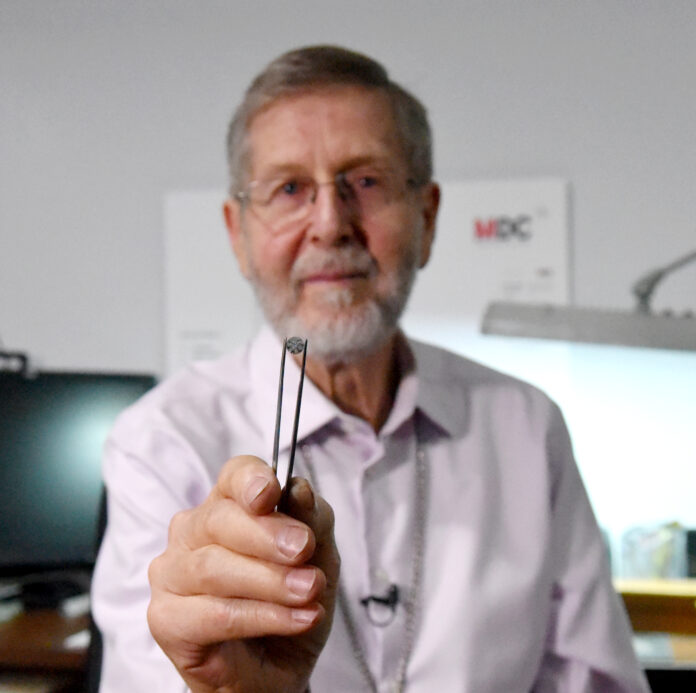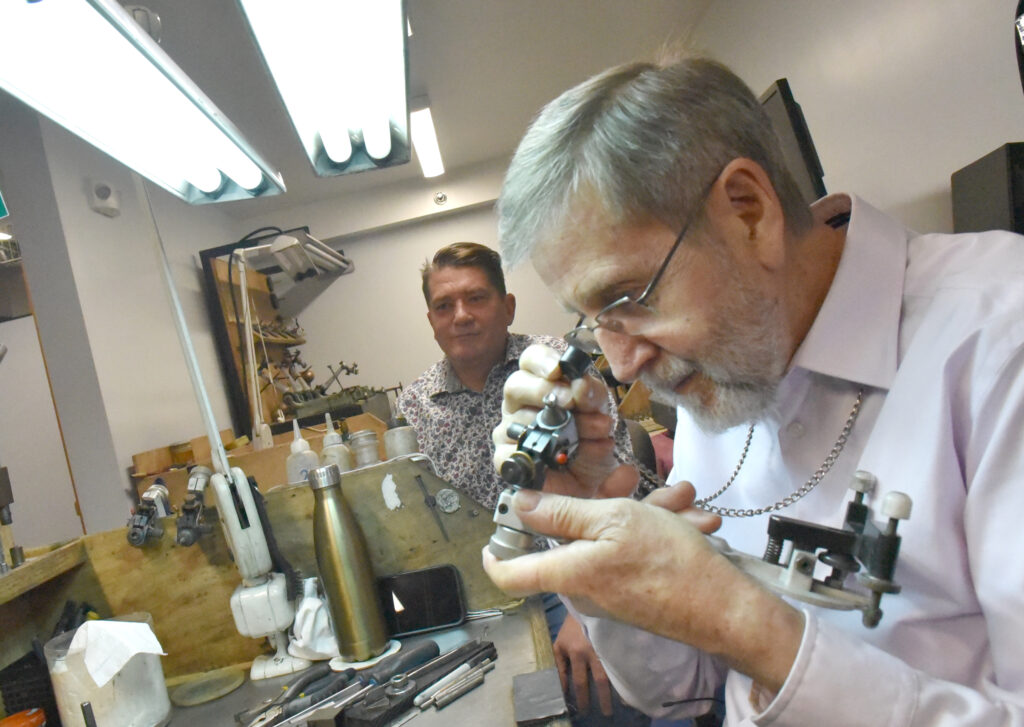
In 2012, Prince Albert’s Mike Botha happened to meet another person at diamond industry event in Hong Kong. That person – Ian Douglas from Wellington, New Zealand – had an idea about a different way to display diamonds.
Botha thought he could make it happen, and started working on a concept to create a Floeting Diamond showcase, something both men describe as a revolutionary way to showcase a diamond.
“I went through all the booths and looked at them and one booth in the designer section caught my eye,” Botha said. “I saw the jewellery they were turning out and it was outside of the box. It’s not the normal, run-of-the-mill stuff. “
Botha showed Douglas the Sirius Star diamonds he has worked with. Douglas liked them and that was the beginning of the relationship.
Weeks later, Douglas sent a concept he had via email. The idea came from Douglas’ own background in jewellery and decades of experience with The Village Goldsmith in Wellington. Online, the business operates as vgjewellers.com.
“The whole premise came about from customers asking me continuously, is there some way that you can disguise the clasp? Can you hide them more,” Douglas said. “This was instantly the way that I thought of it.”
He first had the idea about 20 years ago but it wasn’t until he met Mike Botha in Hong Kong that he found a way to make his concept work.
“The advancements in metallurgy and science and laser cutting and all these other technological factors caught up,” Douglas said. “And it was the meeting with Mike in Hong Kong that elevated the concept.”
Douglas had drawn the idea on paper and thought of ways that it might work.
“He sent me what he had in mind and that was to hold the diamond invisibly.” Botha explained. “Why hold the diamond with clasps and things and hid the beauty of the diamond?”
Exactly how to cut the diamond to reach desired goals of light refraction and brilliance is, for Botha, a lifelong trade. He will patiently work for hours in his workshop at Master Diamond Cutters in downtown Prince Albert to find the right balance.
Too much cutting or too little cutting are both wrong, he said.
“It pains diamond cutters – especially diamond designers such as my dad – who put their life’s knowledge and experience who design diamonds for high light return to have prongs and claws attached to the diamond and obscuring light,” said Evert Botha, Mike’s son and CEO of Master Diamond Cutters. “In this design, all you see is the diamond.”
After some 3D modelling and research into the best type of metal to use, they opted for titanium. They attach it to the stone with a micro-groove in the back of the gem.
Mike likened it to a food container where the lid snaps onto the container.
“That is the principle we’ve been using. It holds the diamond very securely,” he said.
Of course, the concept needed to be tested to make sure no stone would be lost so drop tests were performed. They used the most extreme test they could think of which was the fall of an earring from a lobe onto a ceramic floor.
The prong setting failed at 3,077 drops but Botha points out that people do not drop their jewellery that often.
The ceramic was damaged before anything happened to the jewellery.
“It is 20 per cent more secure than any diamond that is held in position with a clasp,” he said.
Clasps wear down and can be caught on clothing and gloves, something that is not an issue with new concept.
“There’s no deterioration. As it is in the beginning, there it will be for an eternity,” Botha said.
It has taken some time for the impact of the changes to sink in.
“It did not strike me as cutting edge at the time, but as Ian and I were working on it, it kind of morphed into this whole idea of, this is something new,” Botha explained. “It’s a eureka moment, but it didn’t happen like Archemedes in the bath. It took some time.”
Change comes slowly in the diamond industry, where the concept of “modern” can be a century old. For the Floeting diamond, as the concept has been branding, moving from concept to creation in 10 years isn’t that much time at all.
For Mike Botha, even at age 74, having a decade of effort become reality is no time to stop and breathe a sigh of relief.
“It’s like running hurdles,” he said. “When you’re over the one, you look at how you surmount the next one. It’s not an end in itself. It’s a milestone that we’ve crossed and we’ve got a few more to go.”


